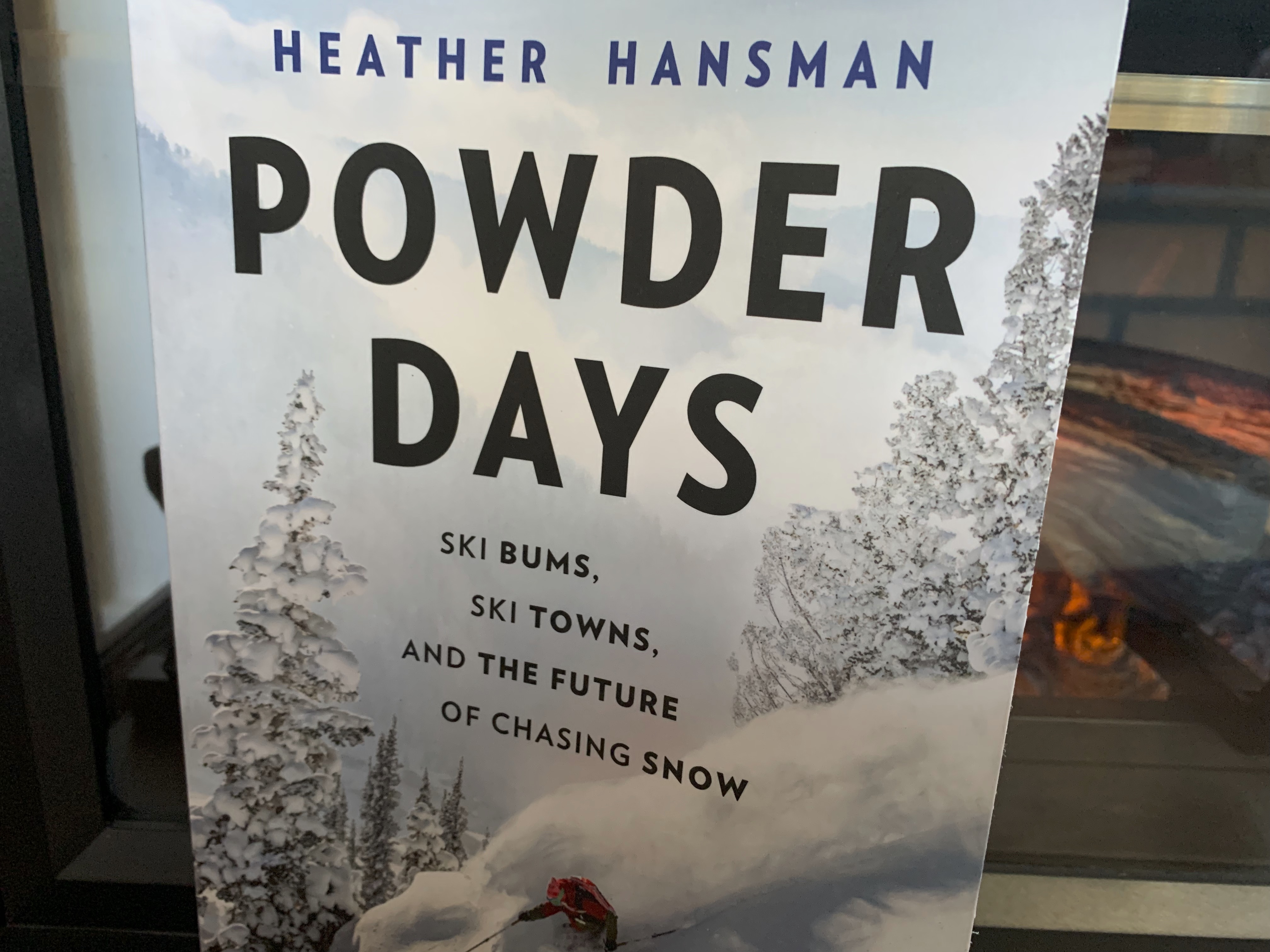
This week, I was reading a story from a few years ago about what the last snow on earth might look like. Snow algae, which occur naturally in the snowpack, rise to the surface during the spring; when they emerge, they turn red. This “watermelon snow,” these days, could be seen as a warning. The algae’s presence means the snowpack absorbs more sunlight and melts even faster, allowing even more algae to grow, melting more snow–another of the many tributaries flooding into the rushing feedback loop of climate change.
I’ve been thinking a lot about the future of snow, too, while reading Heather Hansman’s Powder Days: Ski Bums, Ski Towns, and the Future of Chasing Snow. The organisms she’s looking at are much bigger, multicellular creatures, yet they live for snow in their own, human way. And in the ecosystems we’ve developed around ski towns, there’s a different feedback loop of low wages, unaffordable housing, class and race issues, and mental health challenges, all against the same backdrop of the rising global temperatures.
There’s also joy. That’s why I picked up this book in the first place—I spent several years in one of these mountain towns, trying to find my way both on the snow and off of it. Even back then, the tension between bliss and tragedy there could make your throat ache. The feeling of floating down an open bowl with only granite peaks and Jeffrey pines looking on. The accidents and avalanches every winter. The connectedness of being part of an unseen river of localism that runs on friendships and favor, on two-dollar Tuesdays and leftovers from your boyfriend’s restaurant job. The constant scramble for a paycheck and a place to live, the relentless waves of tourists, the aggressive hum that takes over the lift lines on a powder day, the unsettling nature of a world that depends on how much snow will fall. And the interior tensions, too. the idea that you’re here, in this most beautiful place, doing what you love–yet somehow, you’re letting it all slip through your fingers with all of this thinking about it, while everyone around you seems to know how to live like this.
And that was then. Now, these problems have grown, and grown more entangled. Hansman, a former editor at Powder and Skiing magazines and former ski bum, set off to find out—is this life even possible anymore?
To find out, she went to the mountains—both to ski with those who’ve managed to make skiing their lives and to look at how history, economics, racism, sexism, and the climate are shaping the mountains and the people who live there today.
She doesn’t come away with easy answers. In considering the vanishing snow while skiing in Santa Fe, she writes about solstalgia,”the name for the feeling of the world changing around you, when you were told it would be stable.” Hansman feels it almost constantly now, as the places where she would go to reconnect with the land grow drier each year.
In many ways, the life of a ski town is a rarefied one, and it’s clear from Hansman’s reporting that this life is becoming more and more segregated between the haves and the have-nots, while also maintaining barriers against non-whites and other, subtler barriers against women and anyone who doesn’t quite fit a certain image of the outdoors, including those whose mental health has been affected by mountain tragedies. But it’s also a miniature burden of the problems we face in the flatlands and at every elevation in this country. Throughout the book, she holds up these places to the kaleidoscope, looking at each of these problematic fragments.
Still, woven within all these challenges is the clear wonder of the mountains. While the book offers no clear solutions, this connection seems to be what gives Hansman hope: that somehow, channeling the best parts of a skiing life—the freedom, the outdoors, and the bonds skiing can create with others and with the land—can somehow shift us toward new ways of thinking. This might mean that the life of a ski bum might not look exactly like what it used to. But the snow–the pale pink of watermelons, the rusty shade of old blood–doesn’t look like it used to, either.
Would it be okay to republish your review on my blog Coyote Gulch?